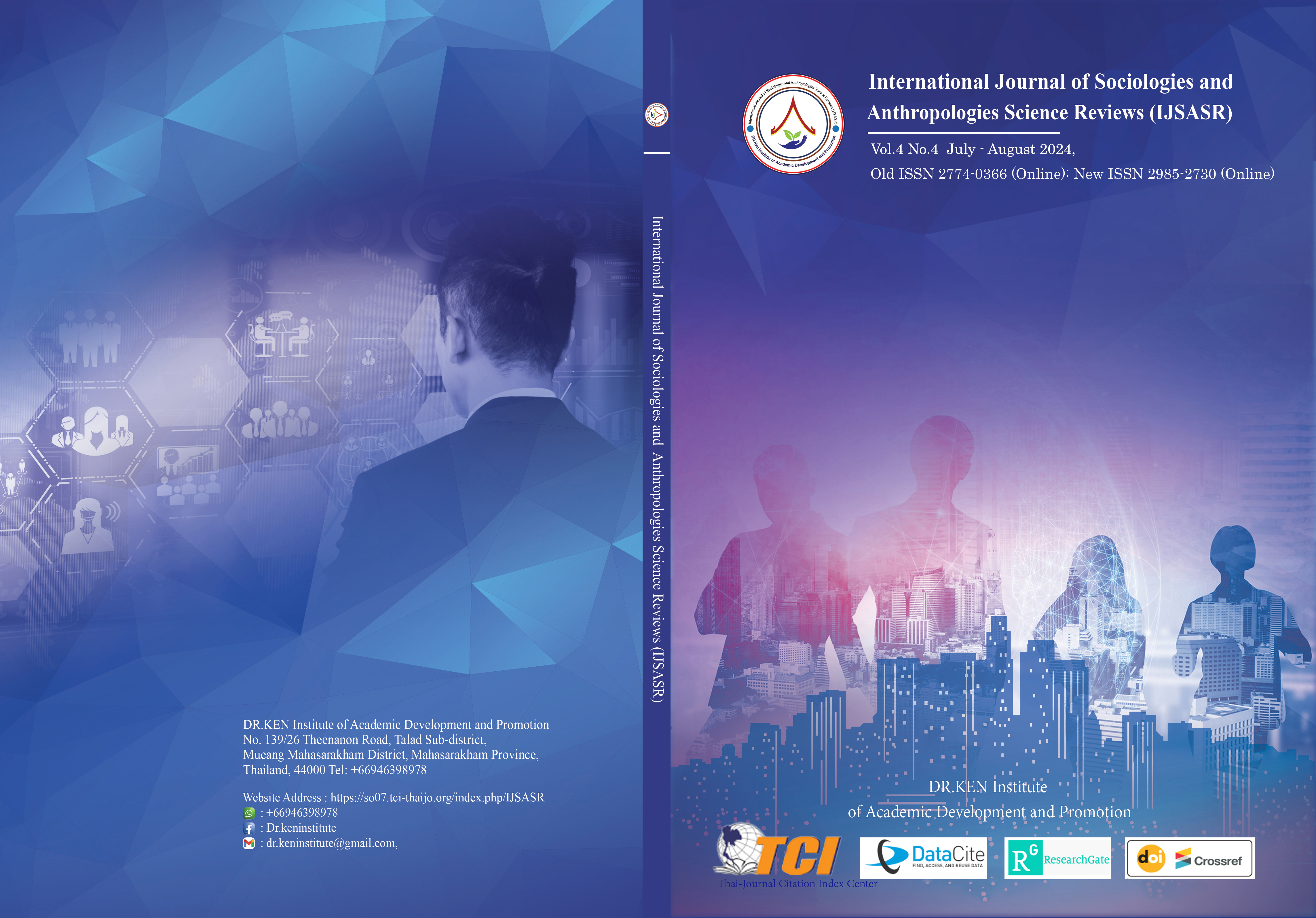Identities of Farming Culture in Jiangnan: The Creation of Animation to Inherit Folk Customs of Polder Rice Farming in Water Towns
Main Article Content
Abstract
Background and Aim: Jiangnan farming culture, a custom culture formed by Jiangnan people in their long history of agricultural production and life, highlights the features and connotations of the region. Recent years have witnessed a shift from a traditional agricultural society to a modernized and urbanized one, which is influencing the traditional agricultural cultural system deeply. In the context of increasingly globalized and intelligentized economic development, factors such as differences in survival and consciousness caused by the special geographical environment in Jiangnan (southern Yangtze River) have accelerated the modernization of farming civilization in the region. Confronting such a crisis, this study adopts an interdisciplinary research thinking pattern to protect, inherit, and spread Jiangnan farming culture in animation works by establishing a connection between the culture and animation art as well as combining theories such as semiotics, design, and communication.
Materials and Methods: Data was collected through literature research, field investigation, and expert interviews to analyze the value, connotation, and characteristics of Jiangnan farming culture, as well as extract its symbolic and animation elements.
Results: The research found that Jiangnan farming culture as a typical polder rice farming culture in China is featured by its unique Jiangnan water town characteristics, which serve as a foundation for creating animation works in this article with polder rice farming as the theme to inherit and spread Jiangnan farming culture.
Conclusion: 1. As an independent art category, the animation plays a key role in building a farming cultural space and shaping the image of farming culture in cross-cultural communication. 2. Through the narrative expression of animation art, farming ideas are spread and passed on through animation lenses, allowing people to further understand the origin of Jiangnan farming culture. 3. Animation brings unlimited creative space to Jiangnan farming culture, which can promote its future innovation and sustainable development.
Article Details

This work is licensed under a Creative Commons Attribution-NonCommercial-NoDerivatives 4.0 International License.
Copyright on any article in the International Journal of Sociologies and Anthropologies Science Reviews is retained by the author(s) under the under the Creative Commons Attribution-NonCommercial-NoDerivatives 4.0 International License. Permission to use text, content, images, etc. of publication. Any user to read, download, copy, distribute, print, search, or link to the full texts of articles, crawl them for indexing, pass them as data to software, or use them for any other lawful purpose. But do not use it for commercial use or with the intent to benefit any business.

References
Chen, M. (2013). Jiangnan agricultural appliances: A new perspective on aesthetic culture. Art Panorama, 62-63.
Chen, S. (2014). Research on the anime inheritance and communication of intangible cultural heritage. Shandong University.
Chen, X., & Liang, Z. (2016). Folk-custom protection in the context of cultural heritage preservation and sustainable development: The case of Hainan, China. Sustainability, 8(11), 1150.
Deng, C., & Li, W. (2017). Urbanization and the transformation of intangible cultural heritage in China: A case study of the Maonan ethnic minority. Sustainability, 9(10), 1845.
Fu, Y. (2015). On the cross-cultural communication of animation. Zhejiang University.
Huang, Y., & Wang, C. (2019). Cultural protection and rural revitalization of farming culture in Jiangnan region. Journal of Anhui Agricultural Sciences, 47(32), 2-6.
Jiang, Y. (2012). Ecological analysis of traditional women's clothing in Luzhi. Popular Literature and Art, 85-86.
Li, X., & Chen, S. (2018). Research on the inheritance and protection of Jiangnan farming culture. Ecological Economy, 34(9), 73-77.
Mao, Y., & Kong, L. (2018). The inheritance and innovation of traditional Chinese folk customs in the tourism development of modern cities. Journal of Xiangtan University (Philosophy and Social Sciences Edition), 39(2), 32-38.
Shi, M. (2020). The value of inheriting traditional folk customs in the context of cultural heritage protection. Journal of Anhui Agricultural Sciences, 48(20), 1-5.
Shi, Y., & Zhu, J. (2017). Exploration of the sustainable development path of Jiangnan farming culture. Research of Agricultural Modernization, 38(2), 234-239.
Wang, Y., & Lin, Y. (2019). Protection and development of intangible cultural heritage in the context of rural revitalization: A case study of traditional folk customs in Zhangzhou, China. Journal of Fujian Agriculture and Forestry University (Philosophy and Social Sciences Edition), 18(2), 26-31.
Wu, Z., & Xu, H. (2020). Protection and utilization of intangible cultural heritage in Jiangnan rural revitalization. Journal of Hebei Agricultural Sciences, 24(3), 11-14.
Yang, Y., & Liu, L. (2019). Research on the cultural connotation and value of Jiangnan farming culture. Journal of Agricultural Sciences, 41(6), 98-102.
Yuan, S. (2012). Research on the inheritance, protection, and development of Shanxi agricultural culture based on SWOF analysis. Shanxi Agricultural University.
Zhang, H., & Li, Y. (2016). Intangible cultural heritage and rural cultural revitalization in Jiangnan. Journal of Anhui Agricultural Sciences, 44(28), 6-10.
Zhang, L., Li, X., Yang, S., et al. (2021). Research on the current situation and protection countermeasures of traditional folk customs in ethnic minority areas under the background of rural revitalization: A case study of the Li ethnic group in Hainan Province. Journal of Ethnic Studies, 6, 63-72.






